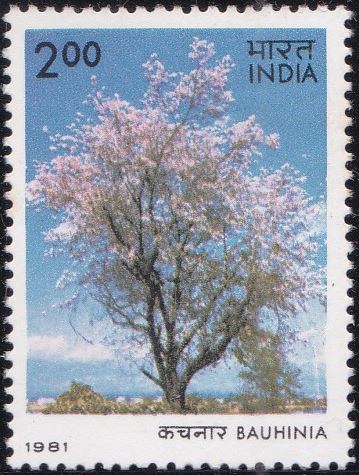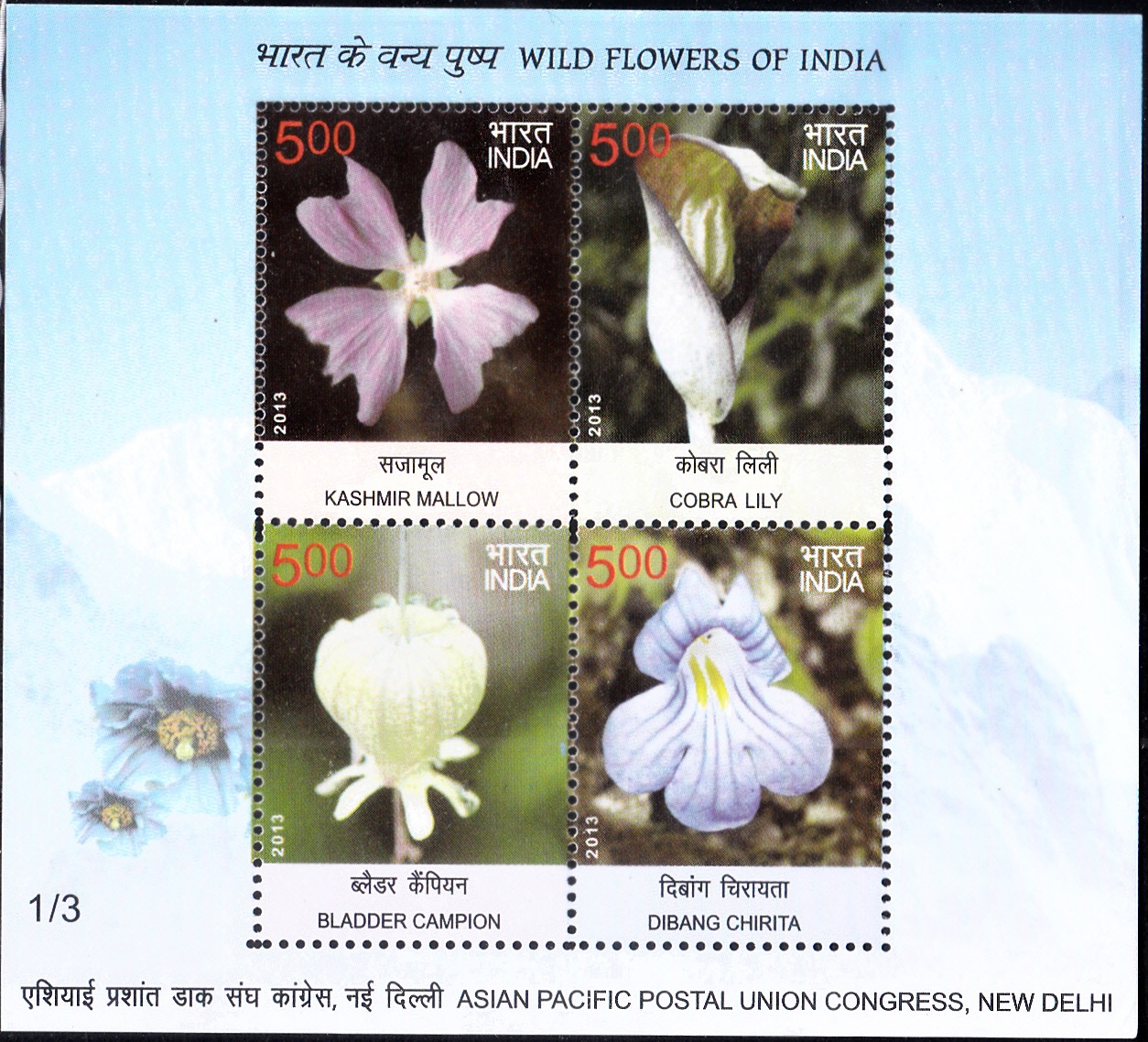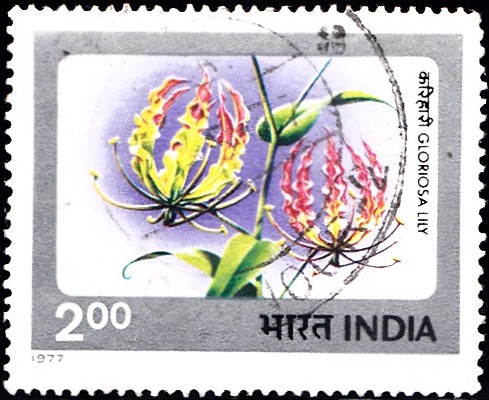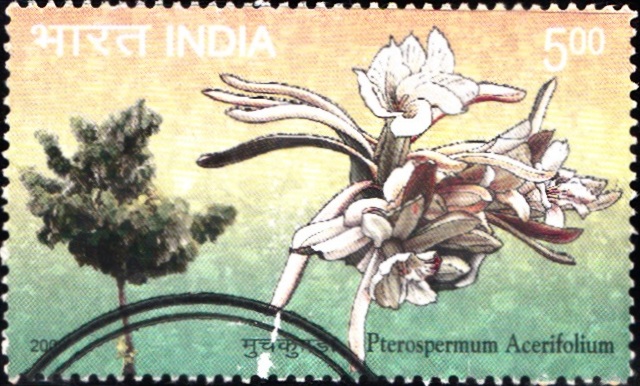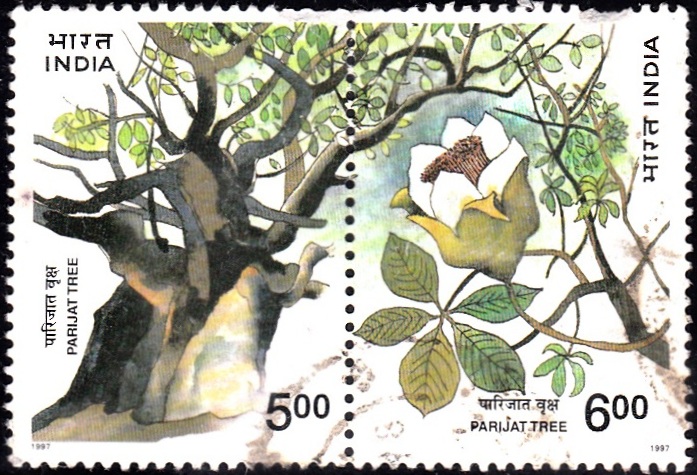
Indian Flowering Tress 1993
Complete set of 4 nos. of postage stamps on the Flowering Tress of India – Jarul, Khumphi, Pangara and Paras Pipal :



 Issued by India
Issued by India
Issued on Oct 9, 1993
Issued for : The Department of Posts has issued several stamps on the rich and varied flora and fauna of the country. This set of four stamps on the Flowering Tress is an addition to the series.
These stamps on flowers and flowering tress issued by the Department of Posts over the years will help to focus attention on the numerous gifts of nature around us, so that one day, we can again feel the same unbounded joy that moved the Poet –
“Oh, Shefali flower,
you light up the shadows
in my green-house”.
[Prakriti: Rabindranath Tagore]
Design Credits :
Stamps and First Day Cover : Sh. O. T. Ravindran
Cancellation : Smt. Alka Sharma, Artist Deptt. of Posts
Type : Stamps, Mint Condition
Colour : Multi Colour
Denomination : 100, 600, 800, 1100 Paise
Overall size : 3.91 x 2.90 cms.
Printing size : 3.55 x 2.54 cms.
Perforation : 13 x 13
Paper : Imported un W/M gravure coated gummed stamp paper in sheets 50.8 x 53.5 cms.
Number of stamps Printed : 1 Million Each
Number per issue sheet : 35
Printing Process : Photogravure
Printer : India Security Press
About :
- “The world is too much with us; late and soon,
Getting and spending, we lay waste our powers;
Little awe see in Nature that is ours;” - That is how poet William Wordsworth lamented even a century ago, and the march of civilisation has driven human beings further away from nature and all her beautiful creations. Here, in the Indian sub-continent with its varying climatic zones, there are so many trees, both indigenous and exotic, with flowers of myriad colours and shapes that can transform the landscape. These are not mere objects of visual delight but also play a vital role in maintaining the ecological balance in nature.
- Four such trees, each contributing in its own way towards making our surroundings more colourful and fragrant, have been chosen for this set of four stamps on Flowering Tress.
1. Lagerstroemia speciosa
2. Cochlospermum religiosum
3. Erythrina variegata
4. Thespesia populnea - Lagerstroemia speciosa (The Pride of India, Crepe flower) Hindi name – Jarul
- A tall, deciduous tree; it is a native of the tropical forests of S.E. Asia. It grows to a medium height but with a uniformly spreading crown. The tree sheds its leaves once a year and is subsequently covered with fresh green foliage. Flowering takes place during May-June, when the terminal panicles develop pale purple or pink flowers, with about 6 wrinkled petals, about 3 cms across. The tree also provides useful timber.
- Cochlospermum religiosum (Yellow Silk Indian Tree) Hindi name – Khumphi, Galgal
- A medium sized soft wooded deciduous tree; it grows throughout India in hot, dry and stony locations. The flowers are large, 6-8 cm across and of brilliant yellow colour, arranged in terminal panicles which appear after the three sheds its leaves once every year.
- The gum that exudes from the tree has medicinal properties and the floss from its pods is useful for stuffing pillows and cushions.
- Erythrina variegate (The Indian Coral tree) Hindi name – Dadap, Pangara
- A tall tree, with smooth yellowish or greenish-grey bark; it is widely seen in deciduous forests in India. It looks colourful with bunches of bright scarlet flowers, which appear after the tree has shed almost all its leaves.
- The soft, light wood from its trunk is used for making toys and cabinets. The leaves make a good fodder and manure. It is commonly planted on village roadsides for the shade it offers.
- Thespesia populnea (Indian Tulip tree) Hindi name – Paras Pipal
- A small evergreen tree, found in the coastal region and in the Andaman Islands; it has a grey trunk with close set branches and broad leaves shaped like a heart and tapering at the end. The leaves, growing alternately, have tiny, coloured spots on both sides as a distinctive feature. Its flower, pale lemon yellow in colour, has a striking deep maroon centre. The black fruit of this tree along with the flowers, go in the making of a yellow dye and are also of medicinal value. Its wood is used in making boats.


